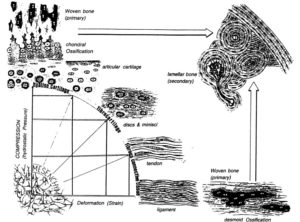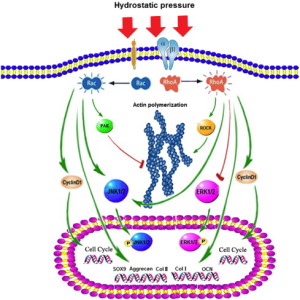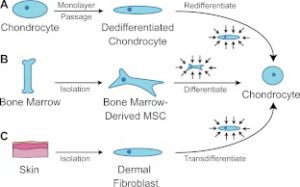I personally have not owned a working TV since I left for college many years ago so many of the cultural trends that has been happening in American society that is derived from TV is not well known to me. Some cultural fads like The Walking Dead and Game of Thrones have become so big that it seems like everyone is talking about them and that is how I would ever get any type of incentive to want to learn more about the fads going on. (Side Note: It is interesting that GoT has made many people start to view little people in a much more positive, enpowering light from the brilliant performance by Peter Dinklage in the series. Since the sudden death of Jon Snow, it might be that Tyrion Lannister might be the protagonist of the series to root for to survive the longest)
Something that I only found out just a few days ago was this hit television show called Small People, Big World which has been airing for years on one of the major television networks. Originally, it was a show that showed the life, struggles, and challenges of this couple living in a farm in Oregon and raising their 4 kids.
The father suffered from disatrophic dysplasia while the mothered suffered from normal Achondroplasia. They were both a little over 4 feet tall. Out of their 4 children, only 1 of their children, their son Zach exhibited short stature. He has a brother who is also his twin, Jeremy.
While Jeremy grew normally to be around 6 feet in height, Zach was reported to have grown to a full height of 4′ 4″. So that is a very large difference in height.
I personally am not that big into drama, so here is what I can tell the reader. I watched the following episodes, Season 1 Episode 1, Season 1 Episode 2, and finally Season 9 Episode 1.
When you watch this show, you realize that at least in the very early in the series, Zach was very shy and reserved while Jeremy was more outgoing and assertive.
So I skipped maybe 100 episodes or more and did not watch along with the family’s development over the last 9 years. From watching the way the mother and the father talked and operated on a day to day level, you realize that they are a very average, well functioning family. The main difference between this rural family from most other “American” families is that the parents are much shorter than average. They have difficulty in doing many things we normal people take advantage of but that is about it
If anything, when you watch the way the children have developed through the years, which I did not since I skipped directly to Season 9, you realize that everyone is extremely well behaved and have a very functional family. There doesn’t seem to be any level of dysfunctional, at least in the few episodes I observed.
Like everyone, I googled more about what happened to the kids as they grew up, finished school, went to college, and then maybe found their spouses.
For Jeremy, a recent clip of him from Youtube (Available Here) reveals that he got married recently to his college girlfriend from Oregon State University. He turned into a very handsome, articulate, well adjusted man now who has a very high level of social intelligence and emotional intelligence. He apparently has his own pumpkin business. Being 6 feet tall (or almost 6 feet tall) probably did help in making sure that he did not develop any type of neurotic or psychological pathologies over his stature and height. Of course, just from watching the 1st episode, I sort of guessed that he would turn out well and find a wonderful wife, which he did. She (Audrey Botti) turned out to be a OSU graduate who was captain of a sports team back in college and the way he talks about his new wife shows that she is a wonderful human being who has a level head who also has a high level of emotional intelligence.
For Zach, when I saw pictures of him which his fiance, I admit that I was a little taken aback. At some level I expected that maybe it would be harder for him to find a long term partner in life than his brother, or at least the time it would take to find someone would be a little longer. His engagement to a lovely girl named Torri Patton shows that his ability in finding a romantic partner does not seem to have been hindered by his short stature, at least for his individual case. Listening to him talk from just Season 9, after 8 years, you can see the changes and transformation in him. The way he conducts himself, the way he talks, the way he expresses his thoughts and opinions show that he has really come out of his shell, has become outgoing and clear, if not even charming in his own unique way. I can definitely see what his fiance sees in him. If I was a female around his age, I could see myself dating him, based on just the way he carries himself, and how emotional stable he is. For girls, maturity and emotional intelligence counts for a whole lot more than what men give credit for, since as men, we are extremely visual creatures so we put much more emphasize on the physical attributes than female. Just because we as men might have issue or problems with something, doesn’t men we should project our own fears and insecurities onto the females who we interact with. So far, I have not seen many negative comments against Zach for planning to marry his normal sized fiance.
Now, I didn’t look at Molly or the 4th child. I wanted to use Jeremy and Zach as the example, since twins are just almost the perfect type of subjects you want to use in a scientific study. 1 control and the variables that you change.
You see that in the end, both of these young men turned out well, finding a great girl to marry and hopefully spend the rest of their life with. Yes, Zach had to grow up with some big challenges being almost 2 feet shorter than his twin, but in the end both came out winners in my opinions. From my daily interactions with people, many of whom are 6 feet or taller, they were not so lucky in life. You see so many people who do not have the level of maturity or intelligence that these men have. That is what separates these young guys from the taller men you see in normal life who are not as successful. It has nothing to do with height.
I may be extrapolating this one example of twin height differences to generalize about all short men but at this point in my life, I think that I am mature enough to admit that being of short stature is not as big of a handicap as some men think it is, for dating or finding romantic partners. It really is not, unless you are severely short.
There are plenty of men who will complain again and again using references and instances that they remember from their life (or second hand accounts, and interactions) as validation to the idea that they have it harder in the world of dating and relationships.
However, at this point I believe that for 90% of the men who complain about their lack of dating success due mainly to their short stature, their situation (and dating success) can be changed based on a change of their level of emotional intelligence and their social intelligence.
If these men were truly socially intelligent, they would be able to recognize the types of people who are not good for them (ie who bring them down constantly) early on in their interaction and avoid them to not get trapped into negative thought patterns, (ie depression, self-doubt, spite). If these men were emotionally intelligent, they would have enough self-esteem and self-worth to realize that they are above all the drama that certain people get them into.
Then, we can look at the height issue from a society perspective. When you look at how many people have watched the show, and how much support the family gets from the viewers, you realize that most of the times, the viewers are actually rooting for the family to succeed and help out the family on the show because they have grown to love the family in their TV screen. For them, the factor of height has mostly disappears after maybe the first few seasons since the novelty runs out. Sometimes drama is created to highlight and focus on the uniquesness of the central characters on the TV show to keep the viewers hooked so they keep on watching.
We currently live in 2015, in the USA, which is probably the most culturally diverse and accepting of all the countries in the world. At an early age we ate taught by out Kindergarden teachers to be tolerant and accepting of people of all different types. Being prejudice against people because of their skin color and ethnic background is no longer accepted publically. As for the handicap, the old, the overweight, the ill, we are very aware that they are fellow humans just like us.
We as Americans realize at some level that we should treat each other with respect. For most of us, the younger generation today, we do judge each other on the strength of their character, and not on some physical trait which they were born with which they can’t change. I have seen a few times where a person of short stature was teased and someone did come quickly to their defense. The same can be true about other groups of people who have been made fun of. What kind of intelligent young person today would ever go up to a handicapped person and joke about their disability? If they did, it shows that they lack that social intelligence I am talking about. If fact, if we are to remember the recent movie that came out that detailed the struggles of the cosmologist Stephen Hawking (The Theory of Everything) who developed ALS beginning in his early 20s when he was at Cambridge, we can see that in today’s age, we actually put these people who go through suffering and challenges in high regards since it shows to use that they are of great courage and character, who has the will to overcome their obstables. How many people who walked out of the movie theater would be able to say that their perspective of the handicapped and disabled was as least just a little improved from watching the movie? I think a lot.
Here is the sword of discrimination which I will make very clear of the people who like to complain on those women who might still be prejudice and bias
- The type of female who is willing or shows the tendency or susceptibility towards being bias and discriminating against and/or joke towards a male of short stature at some level does not have a high level of social intelligence and/or emotional intelligence.
- The type of female who has the ability to look past physical attributes and make a judgement on a man based on his moral character has a higher level of social and emotional intelligence, on average. If you are looking for a long term, well adjusted, great quality girl for a long term relationship, these are the girls you want to be with since they have the correct mindset
It comes down to maturity level. Some girls are just more mature than others. Maturity is positively correlated to intelligence in general. The more intelligent a girl is, the more likely that she is mature as well.
If you looked through the profiles on Tinder today, if we could get the raw data of the females, and plotted their education level with their negative remarks of men of short stature, we would find some level of correlation showing that as the level of education obtained by a female increases, the less likely that she would make derogatory comments about a guy’s physical appearance.
When you see these reddit threads made by guys who keep on talking about The Red Pill philosophy, they often like to say that women finally give beta guys a chance in dating after they turn 30 and start to loose their looks and they are involuntarily no longer have the chance to be with the alpha male with the greatest of resources. Would I would rather propose as an alternative form of thinking is that maybe, just maybe, it took the females some extra number of years of life and experience for them to reach the level of intelligence their their fellow female peers reached years ago. The reason some women who in their 30s start to date the more stable, non-traditional men in their society may not be because they have lost their looks and can’t date the young reich guys anymore, but because they are finally have reached a mental and emotional state which they have matured to a certain level. Some women never leave that immaturity mindset because they were never pushed into a situation where they had to grow up fast, and still think when they are in their 40s that they deserve the 6′ 4″, fit, super millionaire who is Harvard educated and is a world class chef who can speak 3 languages. Become more mature also has a correlation to seeing the world for the way it really is, and acting accordingly to the way the world operates.
When you are raised in a good, well functioning, well adjusted family, on average you turn out well (from a society point of view) and have the socially accepted level of maturity. and social intelligence
The fact is, if a 4′ 4″ young man like Zach Roloff (who suffers from achondroplasia causing him to have a disproportionately large head and short limbs) can find a girl to be with, we as men who might be 5′ 6 or even 5′ 2″ should not be complaining. One of the very first posts I ever wrote for this website was for Sean Stephenson, who is a 3 feet tall guy in a wheelchair suffering from Osteogenesis Imperfecta. He was married to his long time girlfriend Mindie, who is also a lovely lady. Of course, they are indeed outliers and the exception not the rule for guys who are that short. However, they understood that they were severely handicapped but worked harder than other people.
If you really want to have an awesome life filled with real joy, you need to surround yourself with great people. When we get on these internet discussion board to complain and complain some more about how our life sucks because we were not so genetically lucky, our overall life does not get any better. Complaining does nothing except give a momentarily short bit of pleasure in being able to release all the negative energy that has build for a long time inside of us, that has been accumulating from years of anger, resentment, and spite that we did against ourselves. Of course, the moment we rant and write long posts, other people read it, and they also get angry from our release of negative energy. So it just makes things worst. Places like reddit/r/short are places people should avoid to not catch the negative energy or they just might find themselves sucked into this vortex of self-fulfilling, self-induced anger which they never learn how to let go. There are places, dark places on the internet where people go to talk, troll, and make negative comments to satisfy their dark indulgences. Unless these people are true sociopaths, they should never get sucked into that environment. If you keep on complaining, and going back to those websites, you will find that you are wasting precious moments of your life. When you complain, nothing gets accomplished, nobody does anything, and no one is proactive enough to take action to push forward. Complaining is easier.
I would assume that for the guy who is single and writes on internet boards, he would rather be outside and enjoying a nice day with his significant other instead of writing long pieces
Some people think that the correct way to change one’s life and get over the height issue is to lift weights to feel better and gain confidence in one’s body. I disagree on this advice since it doesn’t change the old patterns of brain activity. The brain like all systems will in a situation where stress is induced fall back to which brain circuitry or pattern which takes the least amount of energy, aka which is most familiar aka what is most comfortable. Exercise does not work the brain hard enough to change the old behavior.
It’s not even about lifting weight or dressing better, although exercising would cause the right chain of events which is also a positive feedback loop leading to a better life conditions. Exercising and/or lifting weights will not solve the issue for short men, although the initial rapid changes will give a tremendous boost of confidence that was probably never there before. Of course, eventually the exercising will plateau off, and the old mentality and mental patterns comes back, and the changes in the body from the exercise is no longer enough to push past the plateaus which inevitably arise since the body and brain will always adapt.
What the complainers really need to do is develop their social intelligence and emotional intelligence.
- The most obvious way to develop emotional intelligence is to 1) practice gratitude and 2) give to others (ie help the homeless and the less fortunate) and 3) learn to detach one’s ego from the outcome of a process.
- The most obvious way to develop social intelligence is to 1) join social events with groups which you normally would never go to and 2) find new friends who only give off positive energy and 3) just talk more.
When something stressful happens, the person will call upon the their new set of friends and the friends will make sure the person does not spiral back to old patterns of thinking.
Over time, the intelligence of the person increases until their maturity level increases. The fact is that once a person has reached a certain level of maturity, they will complain less since they understand that complaining is unproductive and does not improve their overall life quality in anyway, except to hold they in a limbo-state of perpetual circle of negative emotions.




